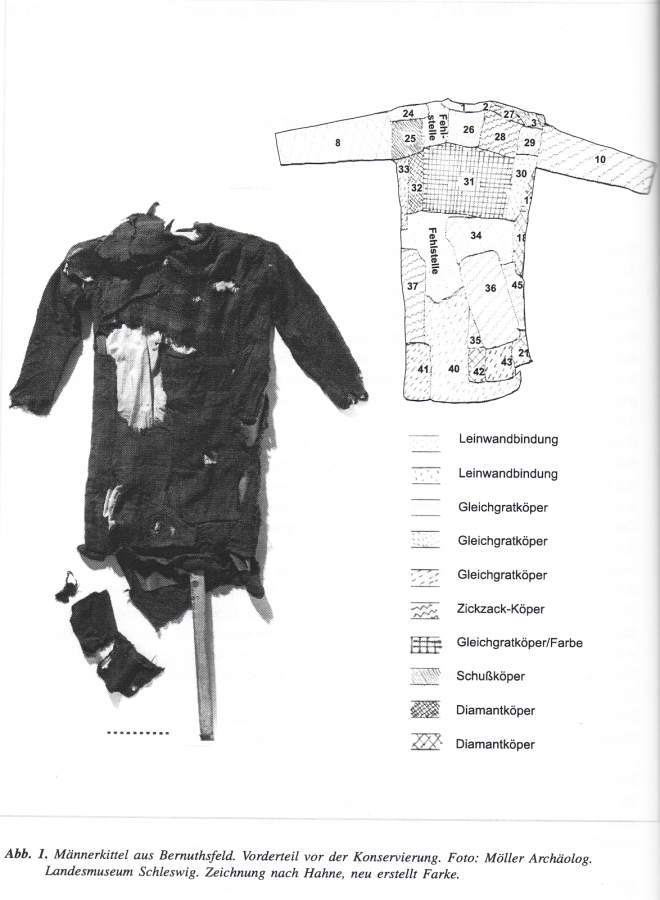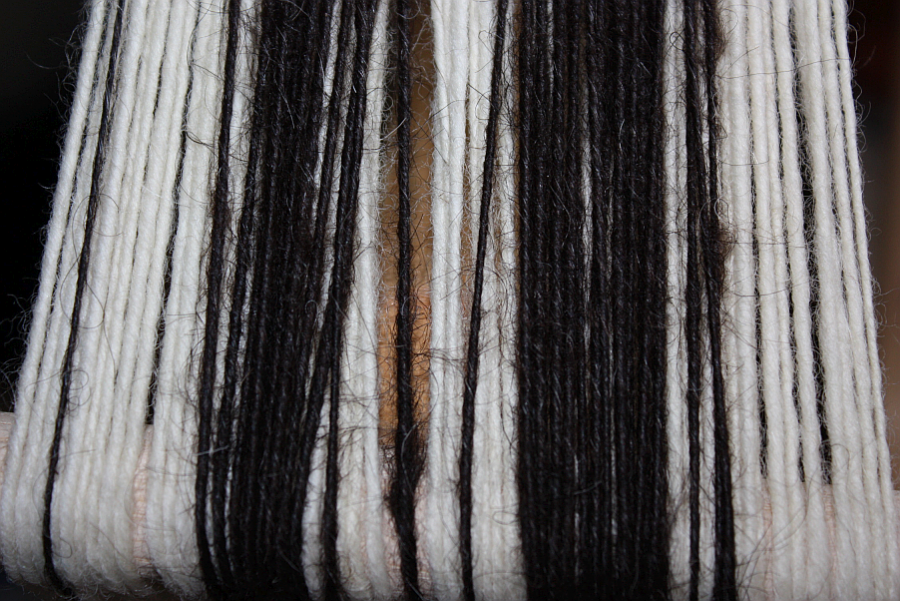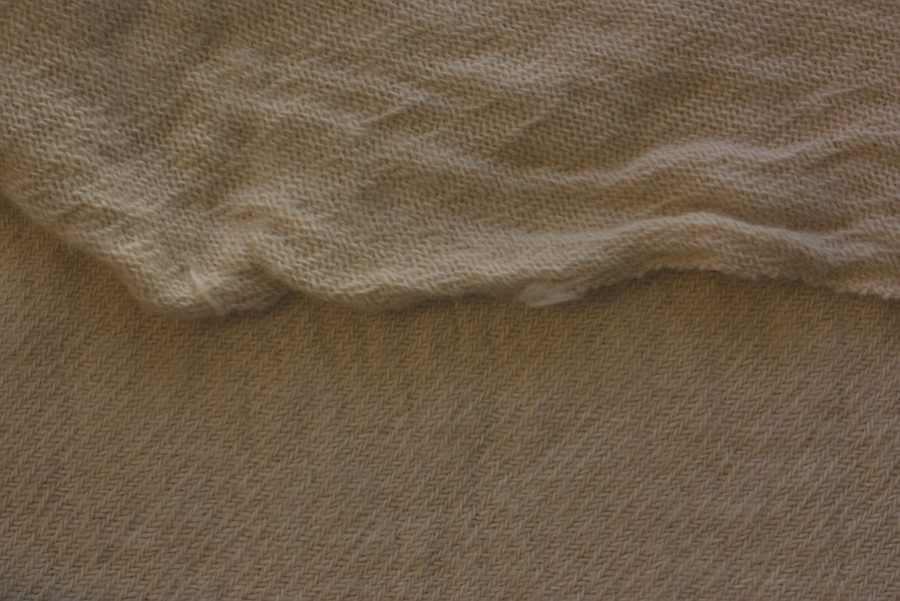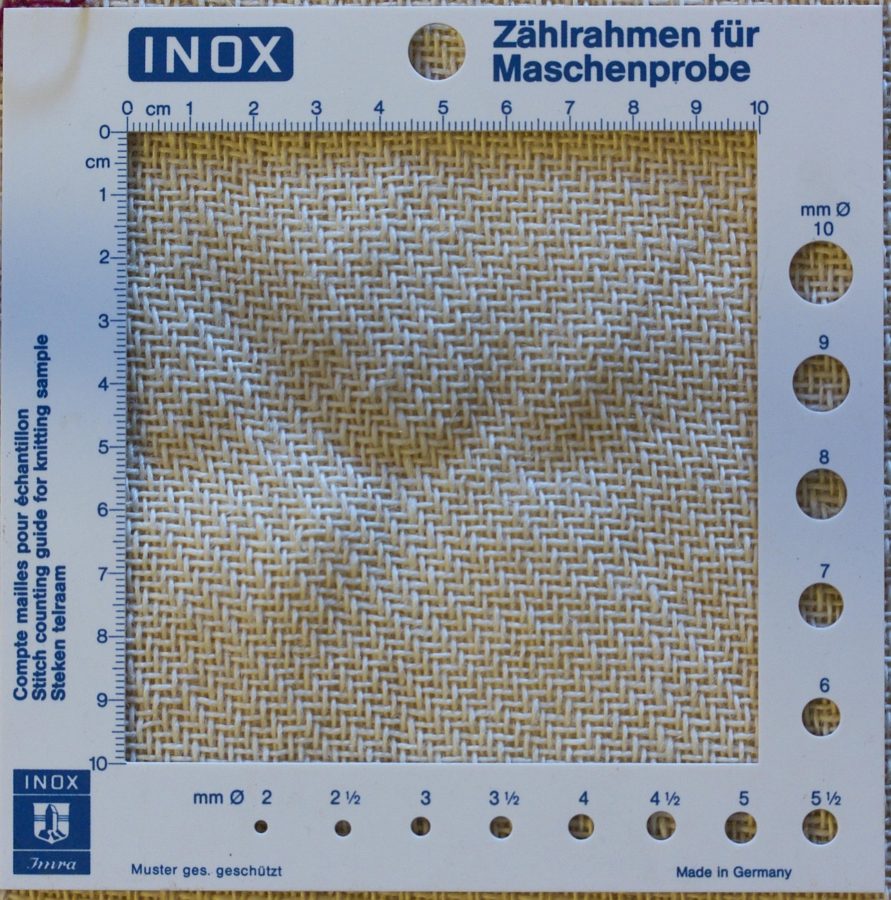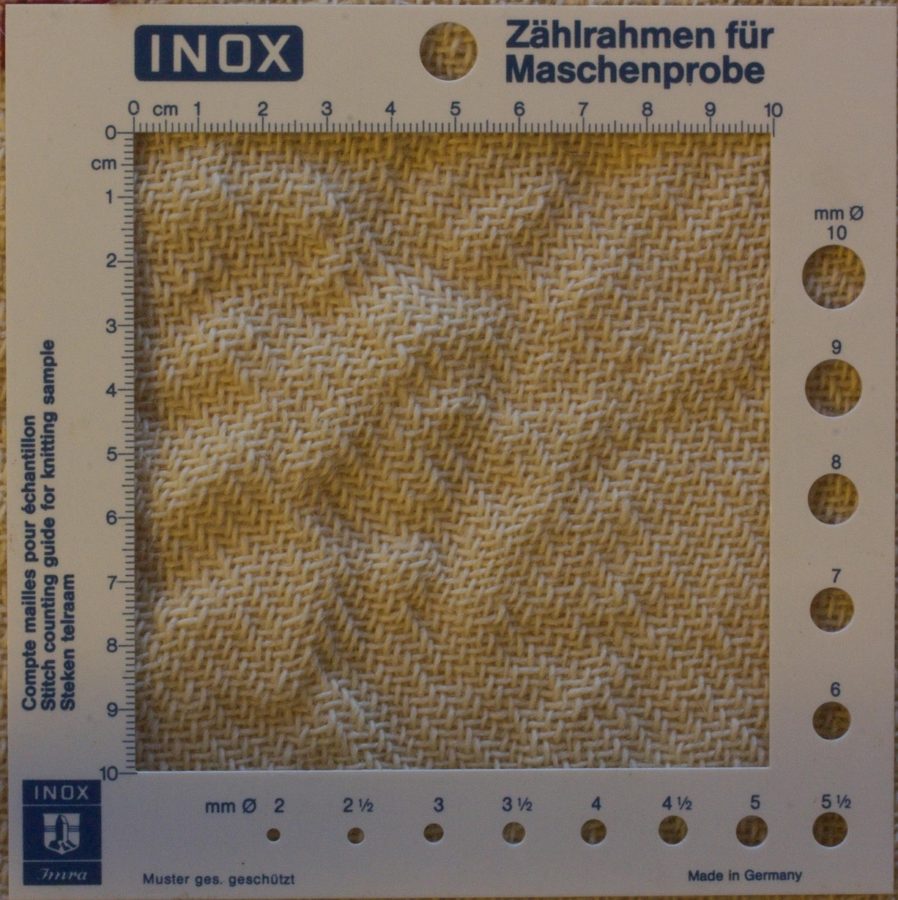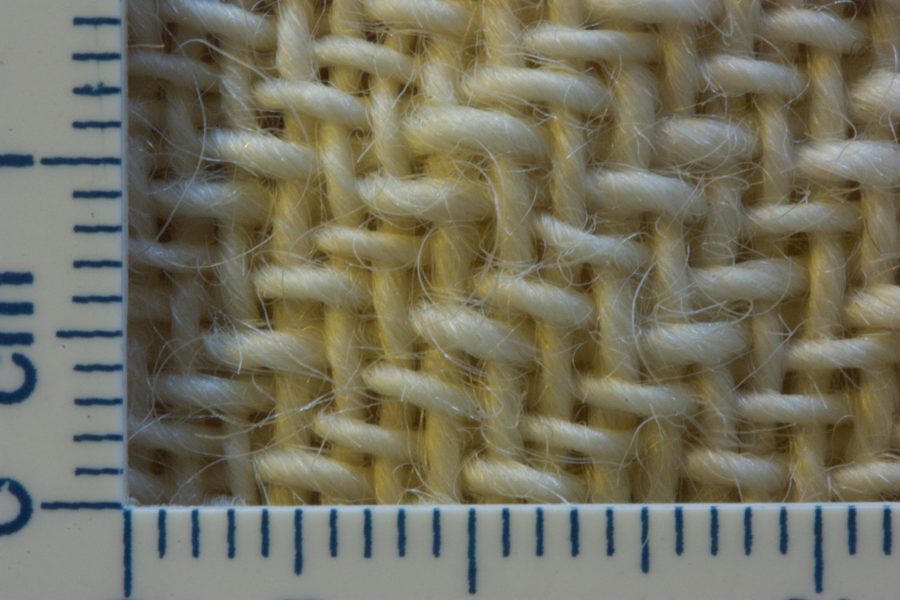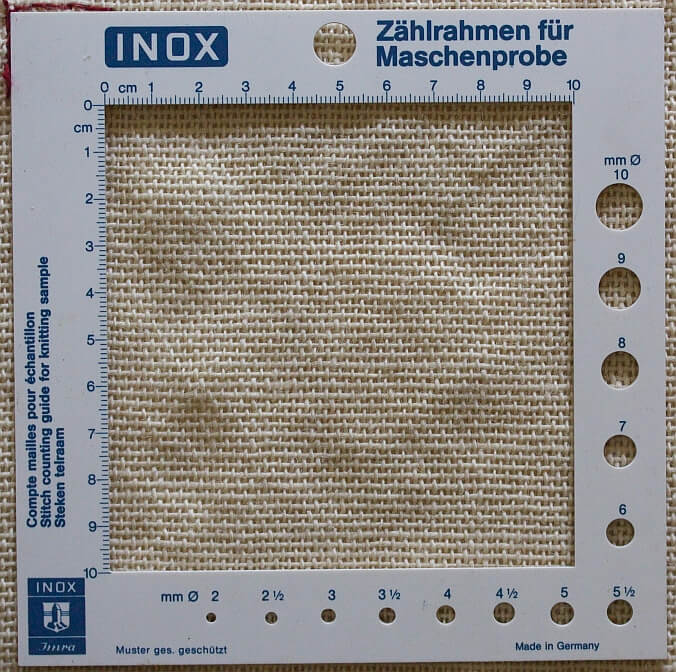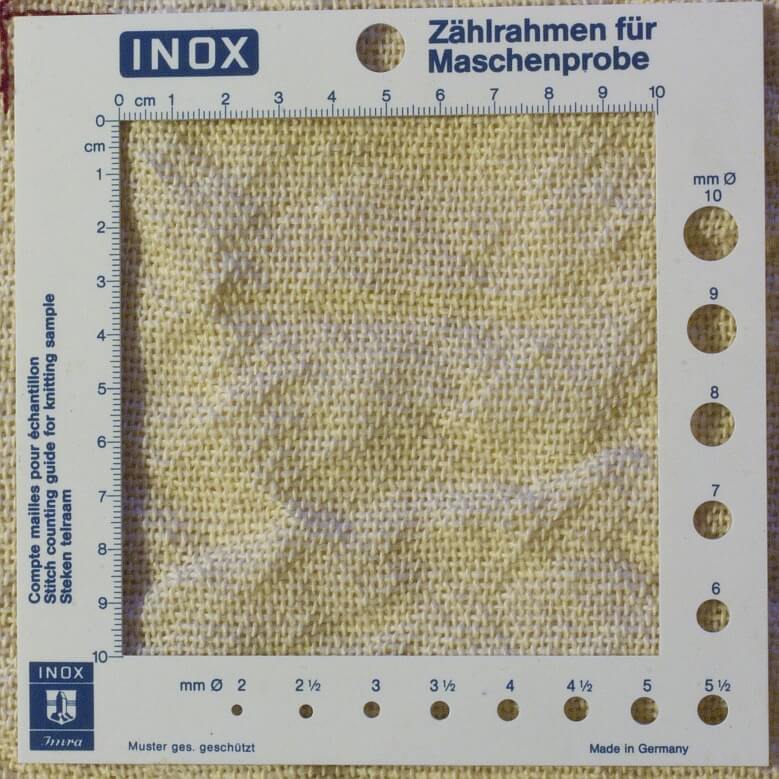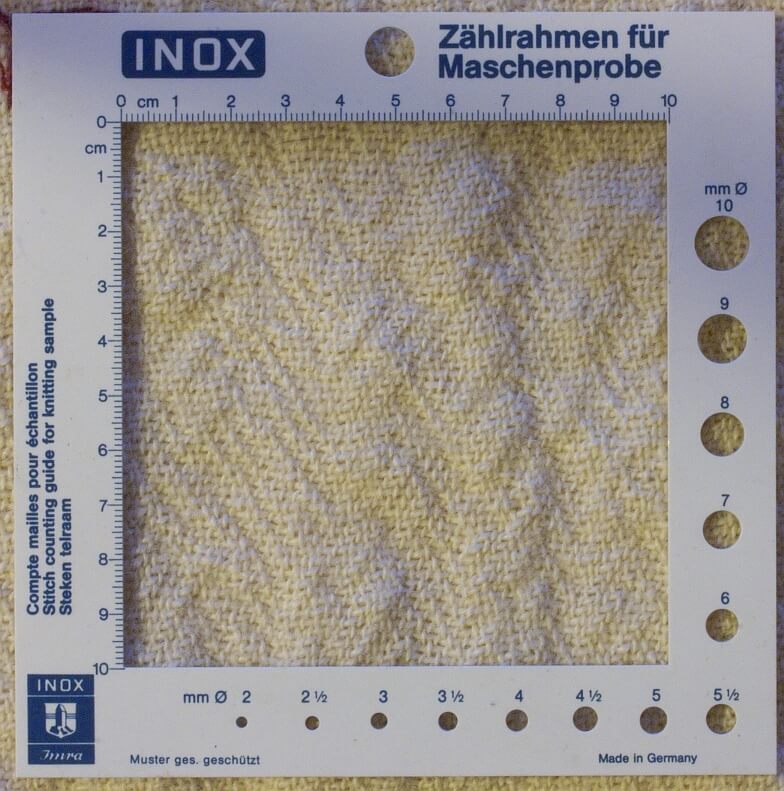There's some more progress on the Bernuthsfeld project, though it is all but spectacular - pre-wash documentation of the fabrics, and subsequently washing, drying, and documenting them again. That documentation would mostly not be strictly necessary, but I couldn't resist the temptation to gather some additional data. Like how much shrinkage we are getting with the fabrics, and if there are clearly observable changes in how the yarns look before and after washing.
So what I did was take closeups of an area marked with a bit of red polyester sewing thread - you can see that in the upper left corner of my measurement frame. And these are just a few of the many, many fabrics:
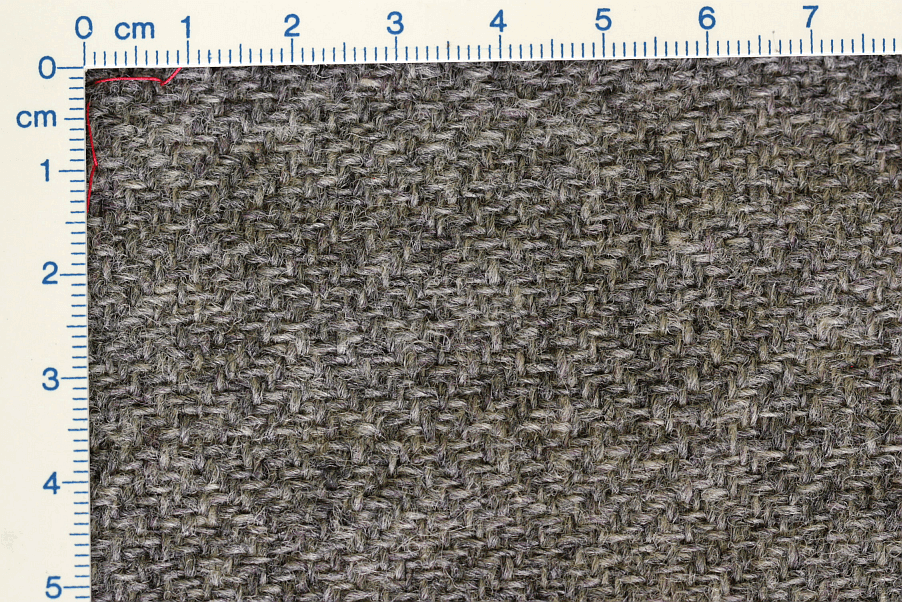
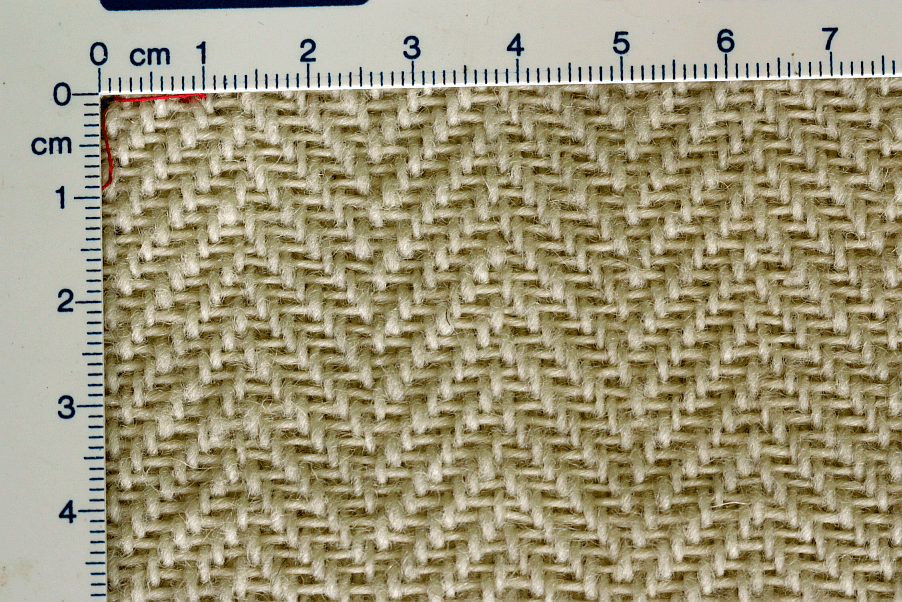
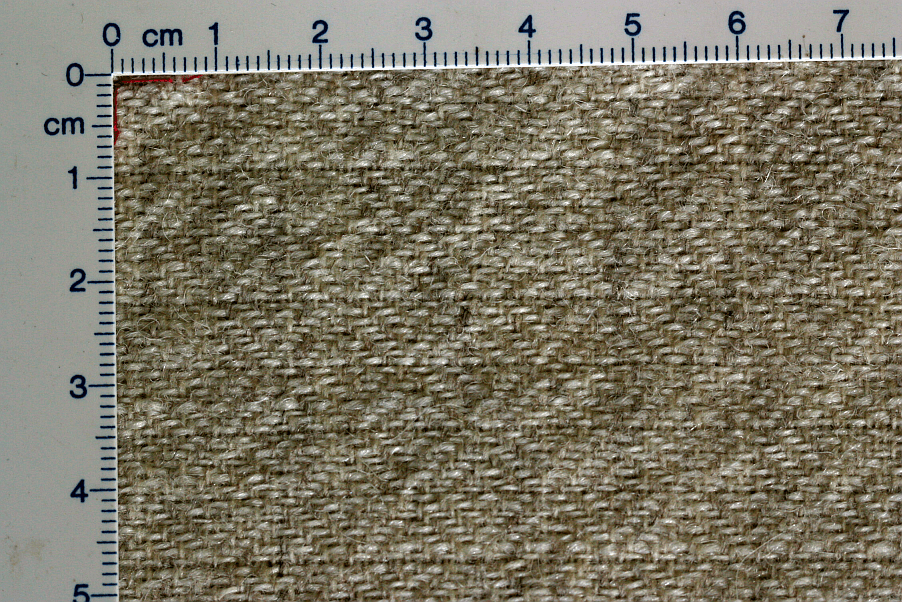
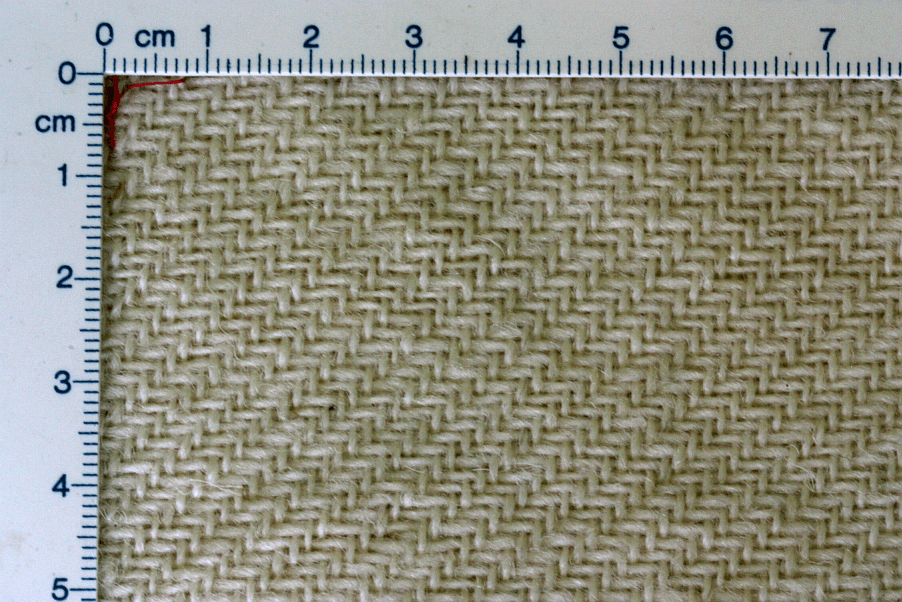
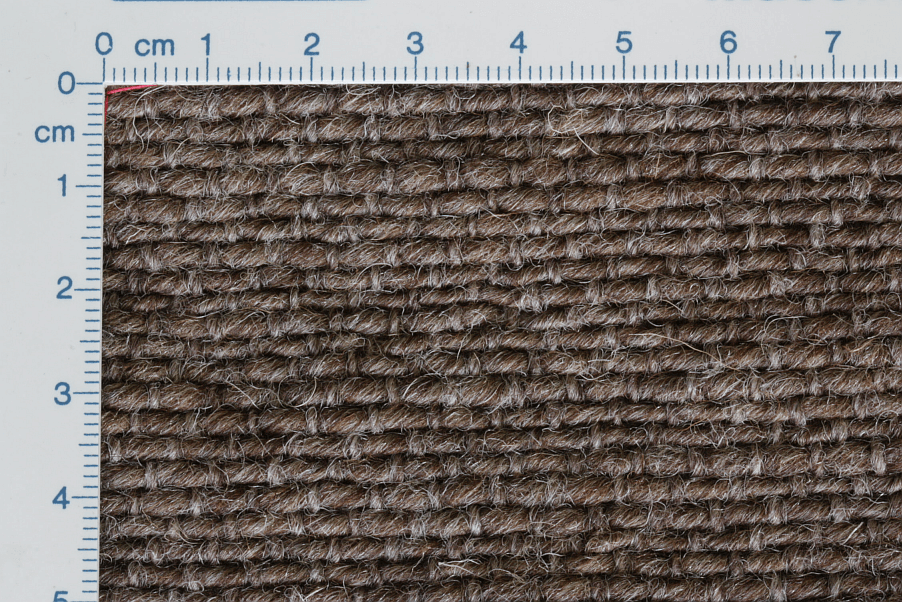
All of these will eventually be cut up and pieced together to form the Bernuthsfeld tunic reconstruction... before that, though, they will get washed and dried and have another photo op. And I'm really, really curious to see how it will come out!
So what I did was take closeups of an area marked with a bit of red polyester sewing thread - you can see that in the upper left corner of my measurement frame. And these are just a few of the many, many fabrics:





All of these will eventually be cut up and pieced together to form the Bernuthsfeld tunic reconstruction... before that, though, they will get washed and dried and have another photo op. And I'm really, really curious to see how it will come out!




